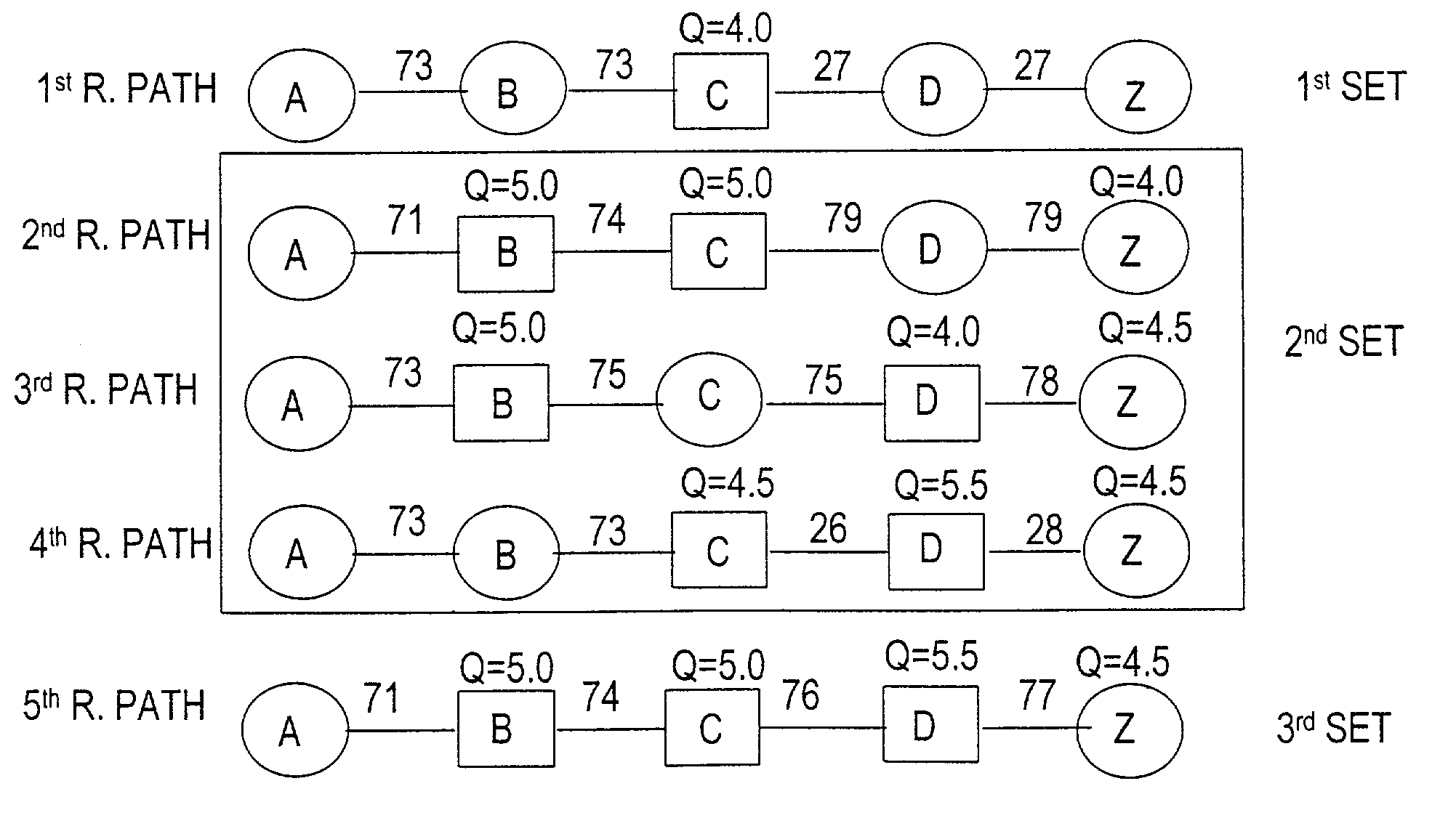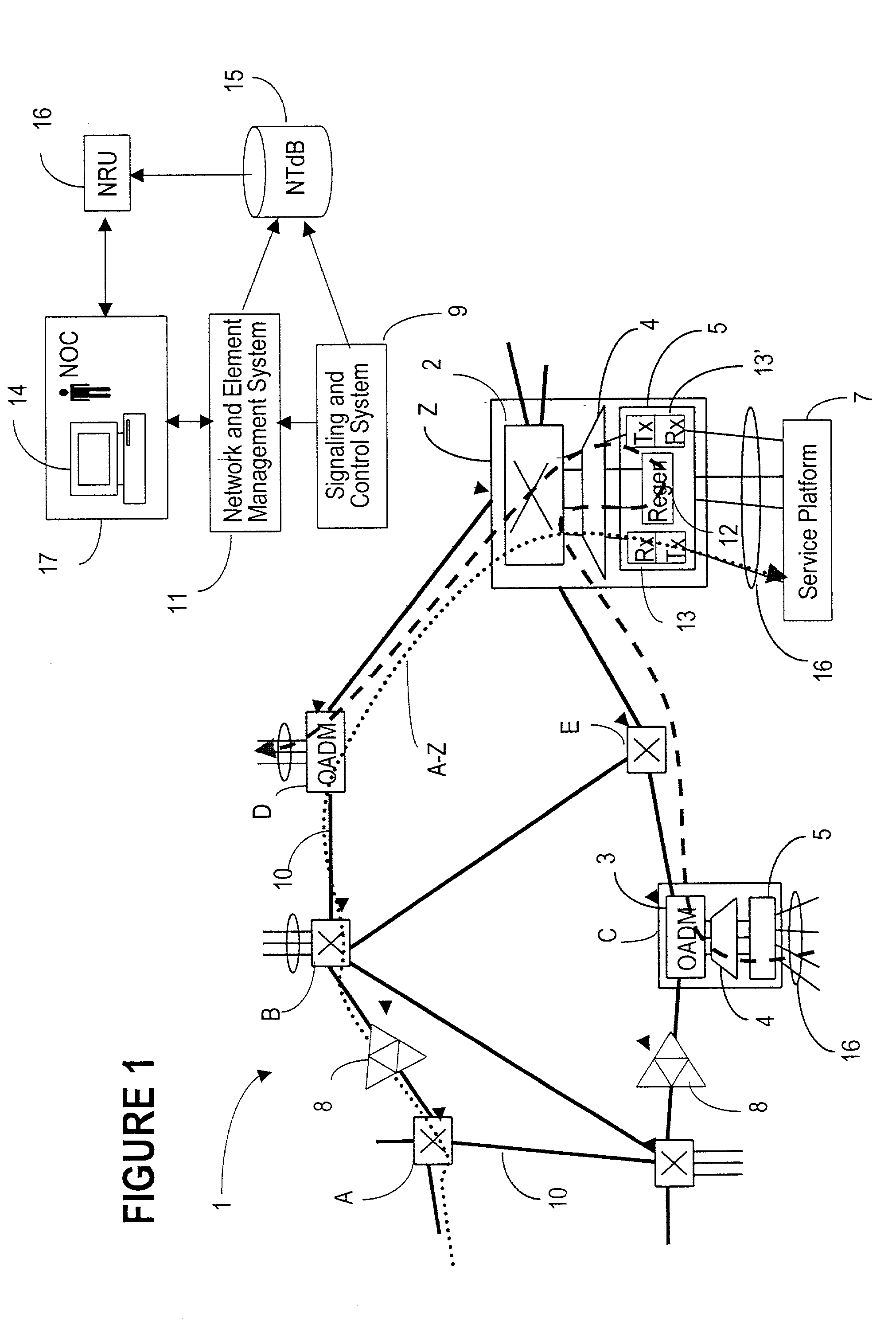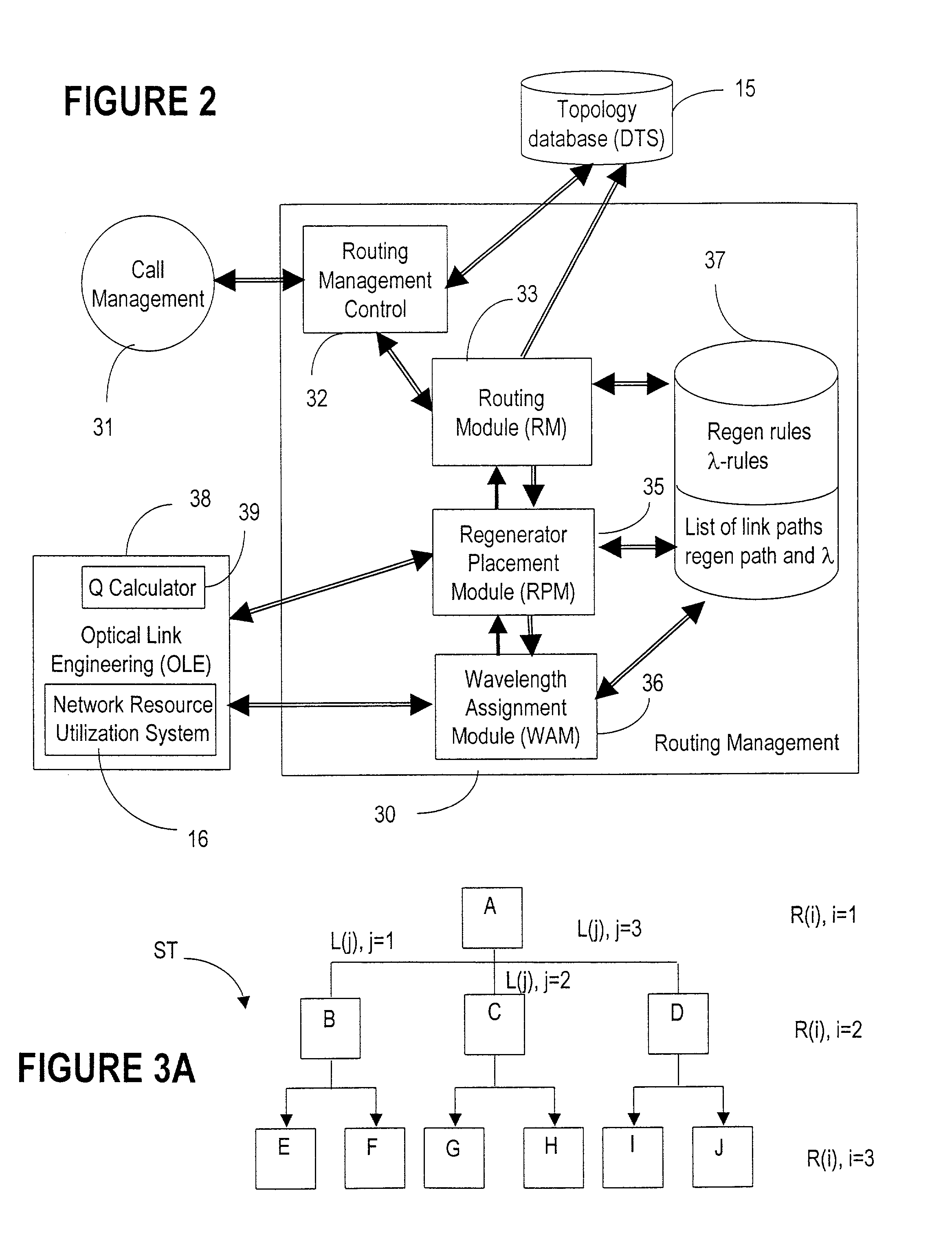Wavelength routing and switching mechanism for a photonic transport network
a technology of photonic transport network and switching mechanism, which is applied in the field of telecommunication network, can solve the problems of unjustifiable cost and complexity of network, unjustified oeo conversion at the intermediate nodes, and negative impact of point-to-point connectivity on service activation time, so as to achieve cost savings and flexible provisioning
- Summary
- Abstract
- Description
- Claims
- Application Information
AI Technical Summary
Benefits of technology
Problems solved by technology
Method used
Image
Examples
Embodiment Construction
[0032]FIG. 1 shows an example of a photonic network 1, to which the present invention applies. The DWDM layer of network 1 is mesh-connected with flexibility points instead of traditional pt-pt nodes.
[0033]Such a network is illustrated in FIG. 1. The architecture and operation of this network is described in co-pending applications “Architecture for a photonic transport network” (Roorda et al), SN not yet available, docket #1001, filed on . . . , which is incorporated herein by reference.
[0034]To summarize, network 1 comprises bidirectional fiber links 10 connecting a plurality of nodes, which are nodes A, B, C, D, E, F, Z in the example of FIG. 1. The nodes could be switching nodes A, B, E, F, Z, OADM (optical add / drop multiplexing) nodes C, D, and bidirectional optical amplifiers 8 which condition the optical signals. Local traffic 16 originating and terminating on a service platform 7 (e.g. a router, an ATM switch, an EXC, etc.) accesses the network 1 at a switching node or an OA...
PUM
 Login to View More
Login to View More Abstract
Description
Claims
Application Information
 Login to View More
Login to View More - R&D
- Intellectual Property
- Life Sciences
- Materials
- Tech Scout
- Unparalleled Data Quality
- Higher Quality Content
- 60% Fewer Hallucinations
Browse by: Latest US Patents, China's latest patents, Technical Efficacy Thesaurus, Application Domain, Technology Topic, Popular Technical Reports.
© 2025 PatSnap. All rights reserved.Legal|Privacy policy|Modern Slavery Act Transparency Statement|Sitemap|About US| Contact US: help@patsnap.com



